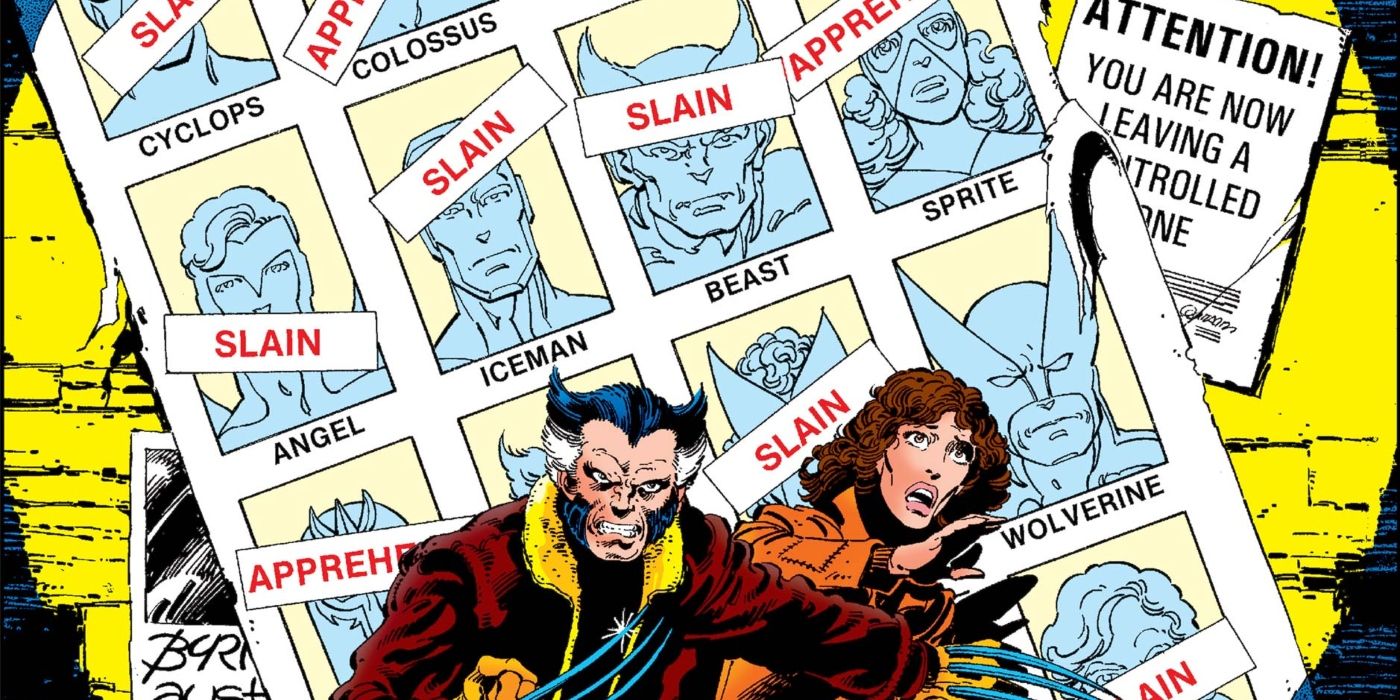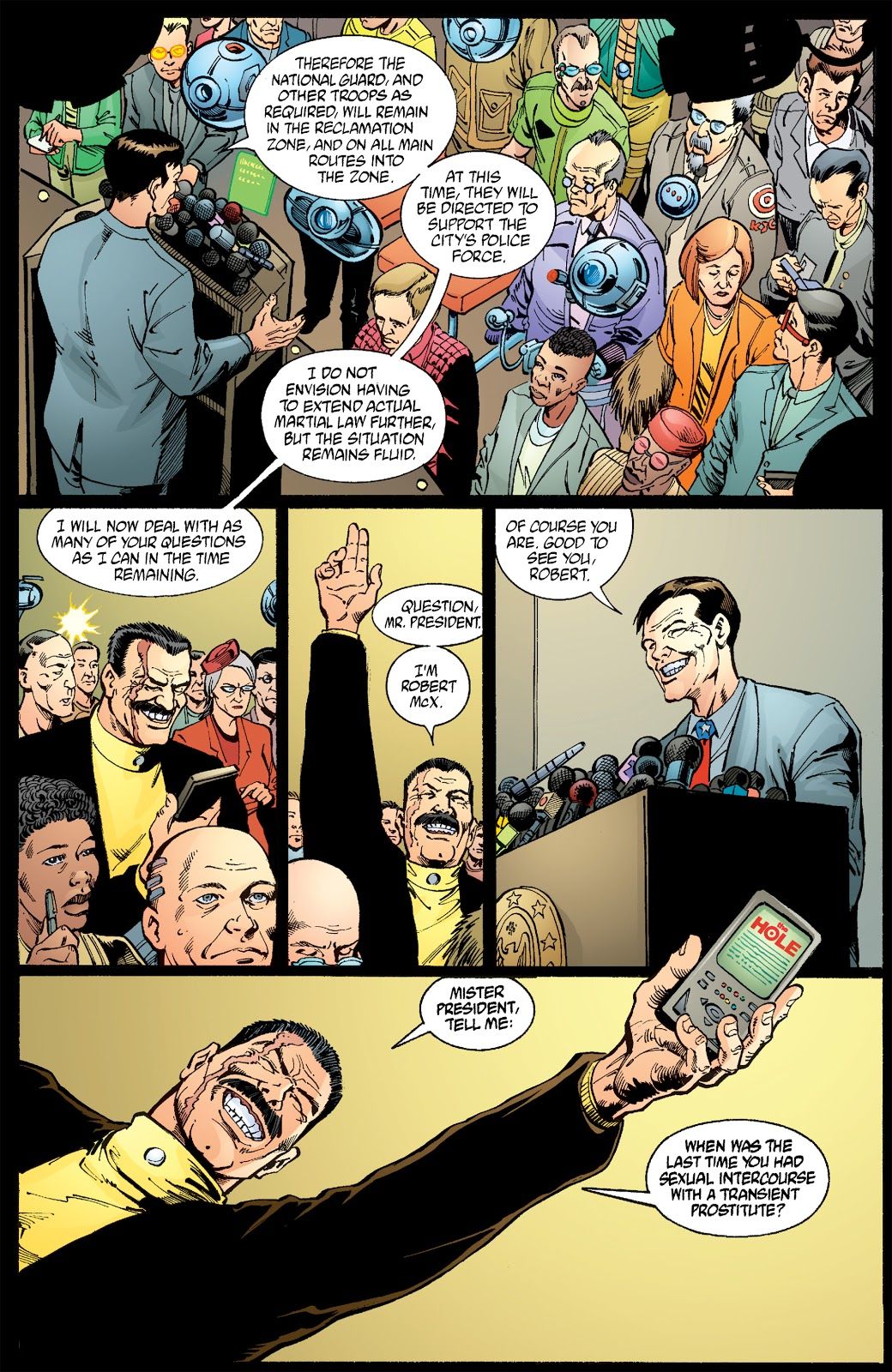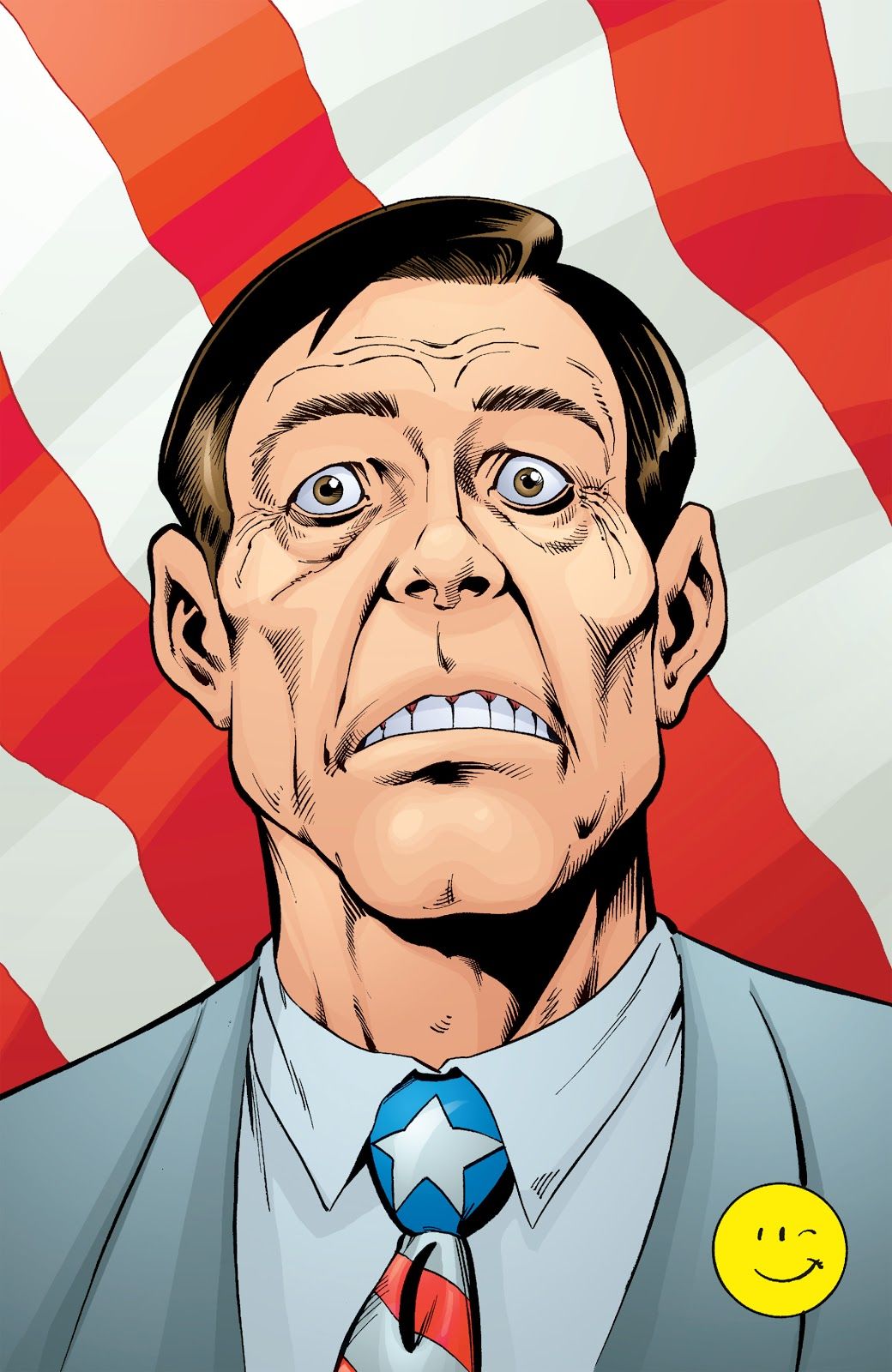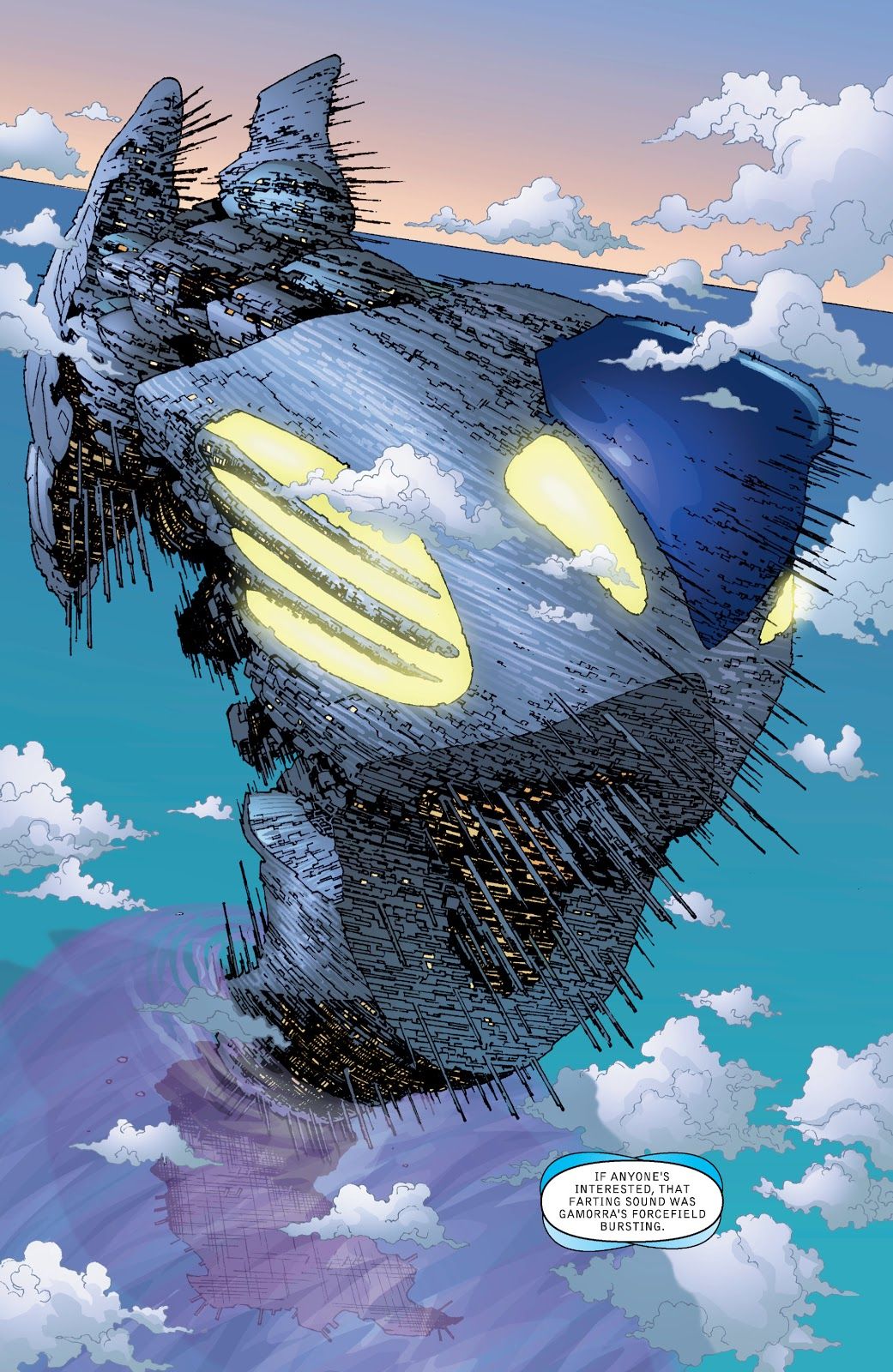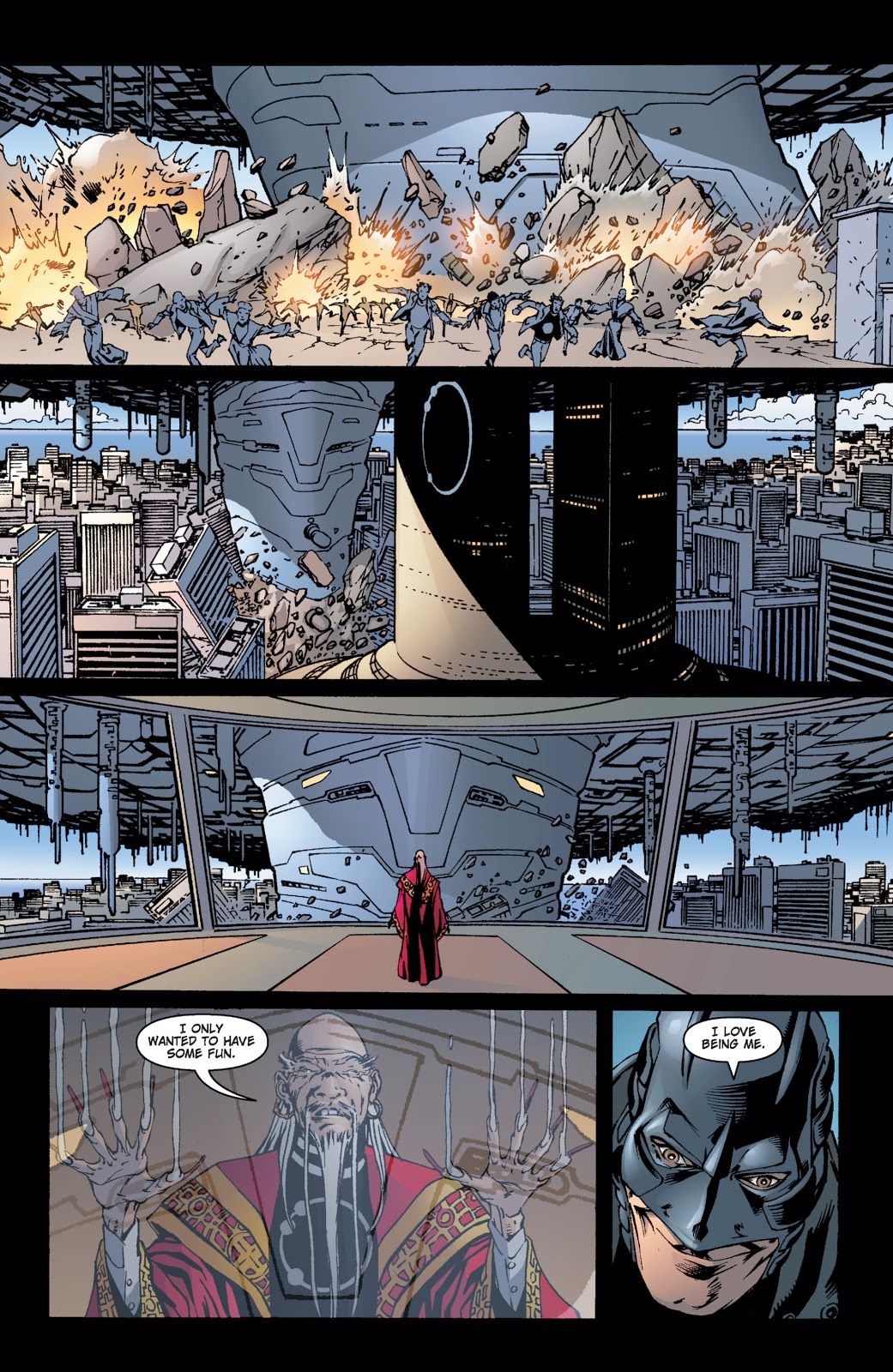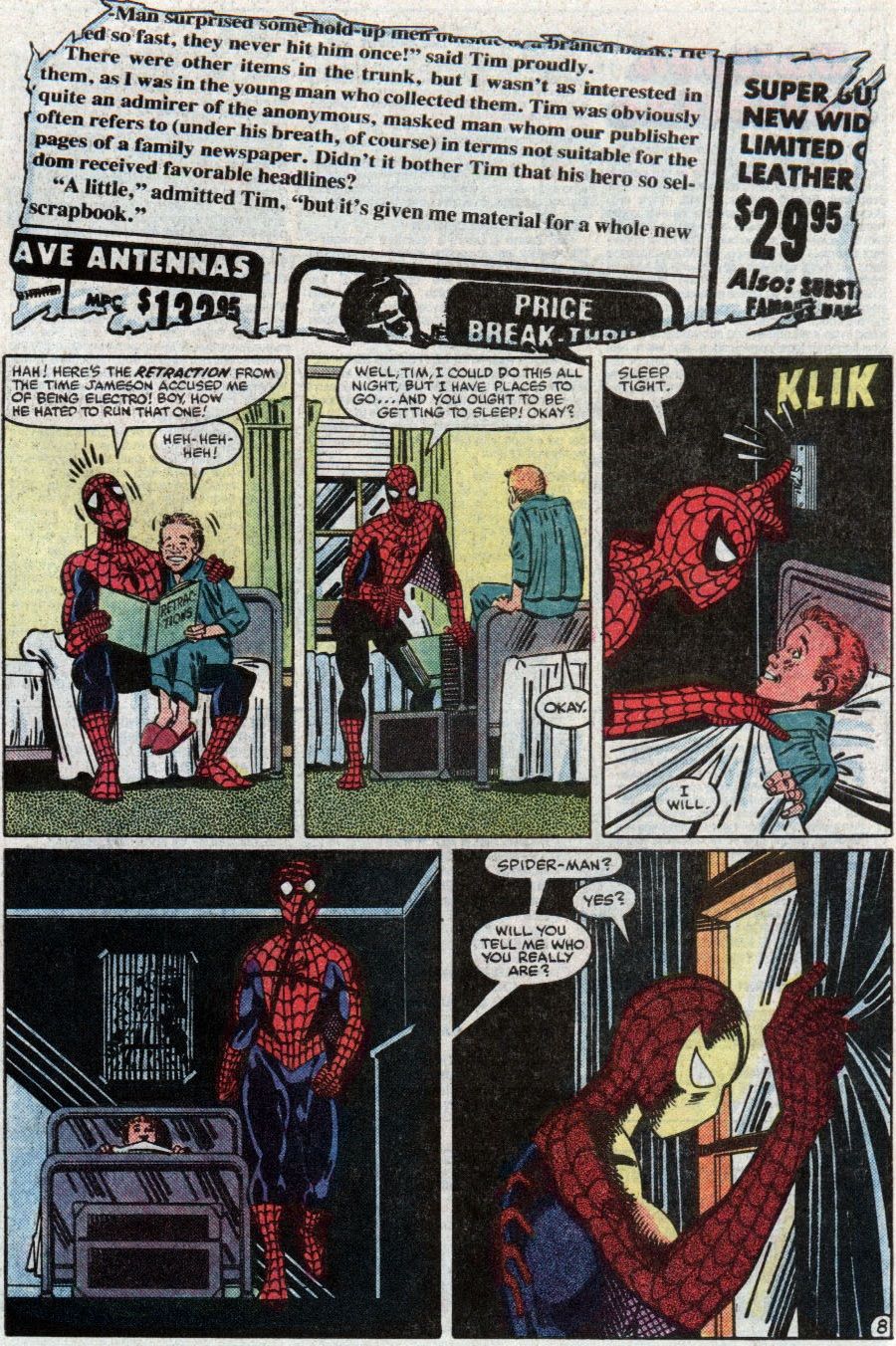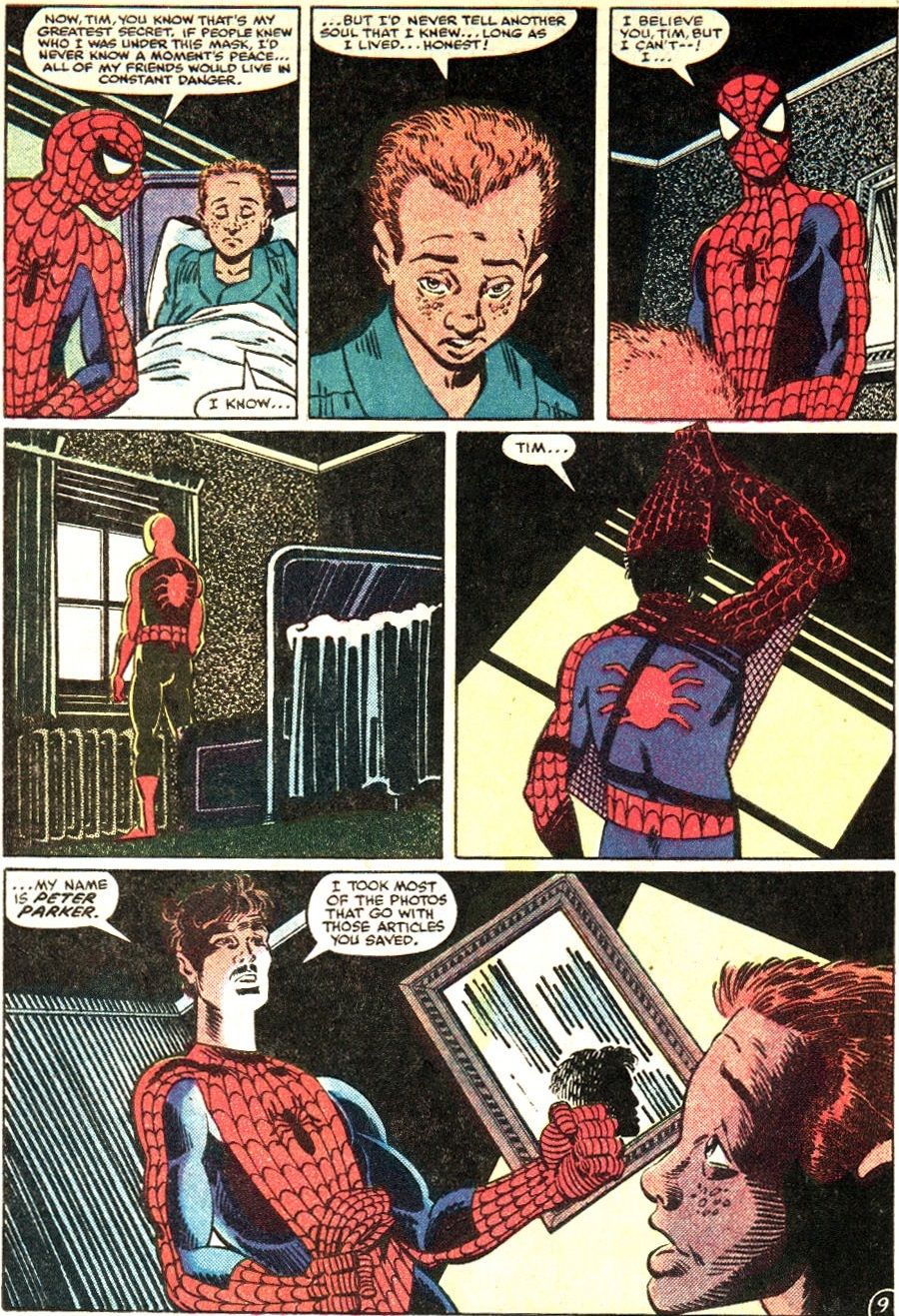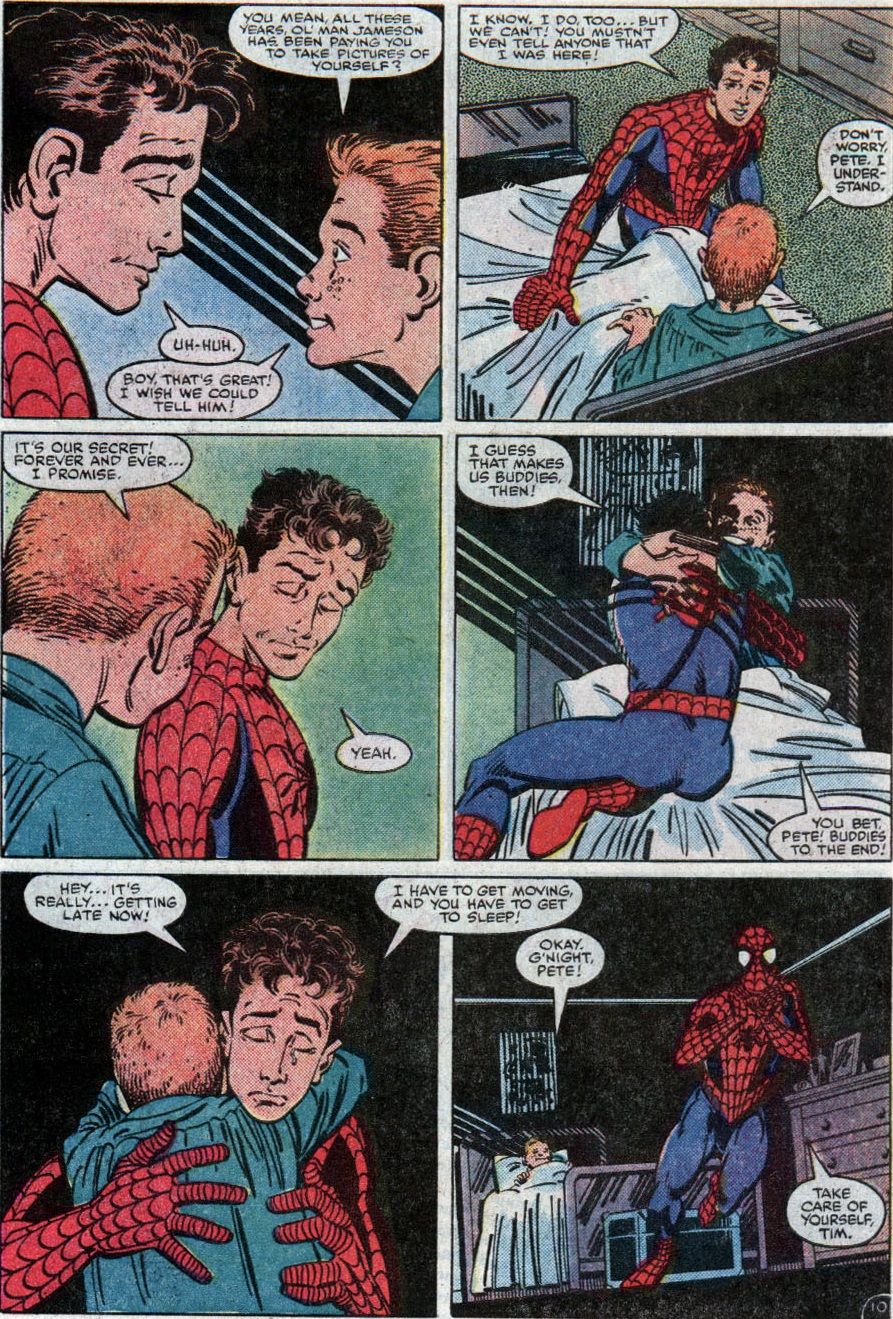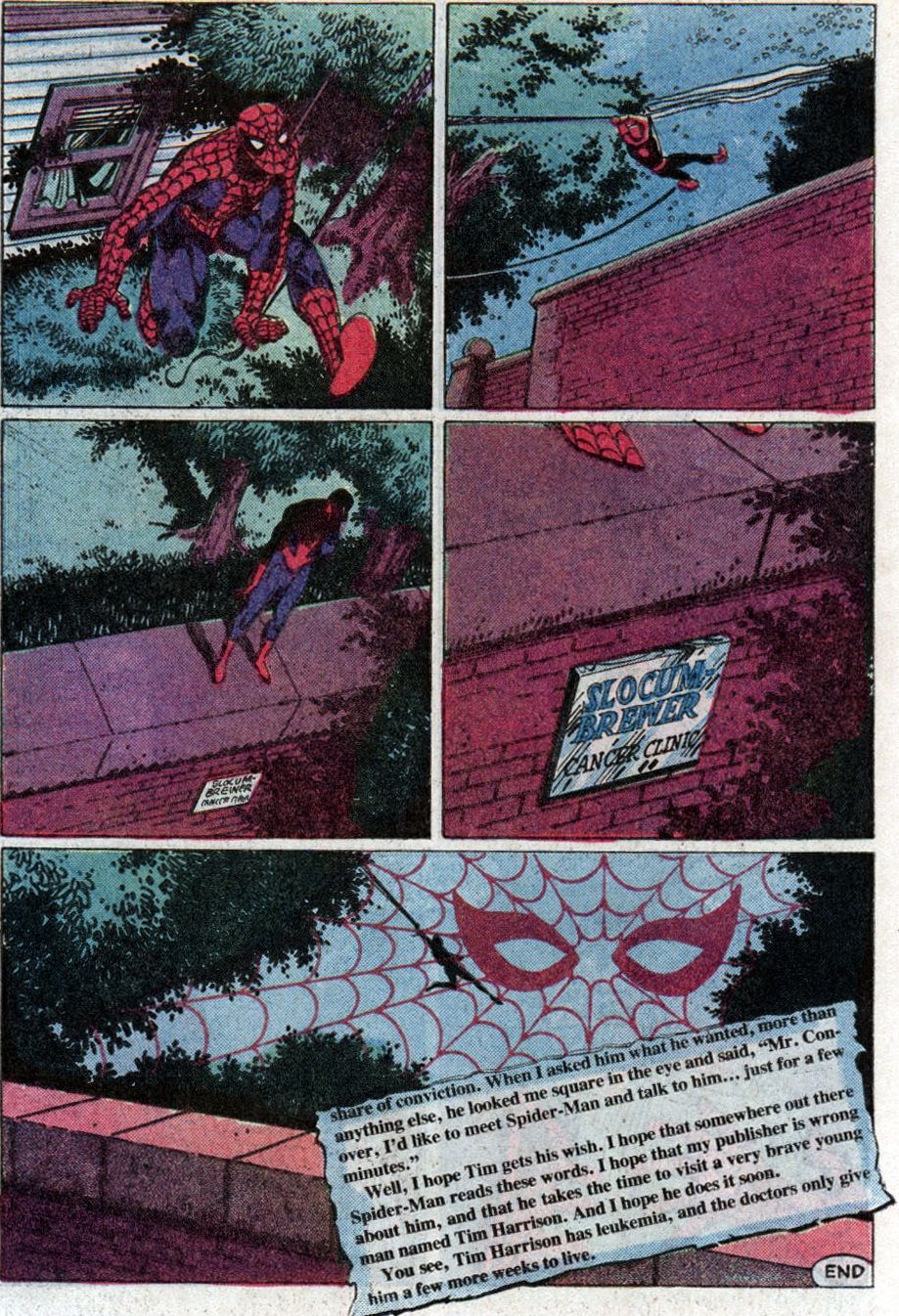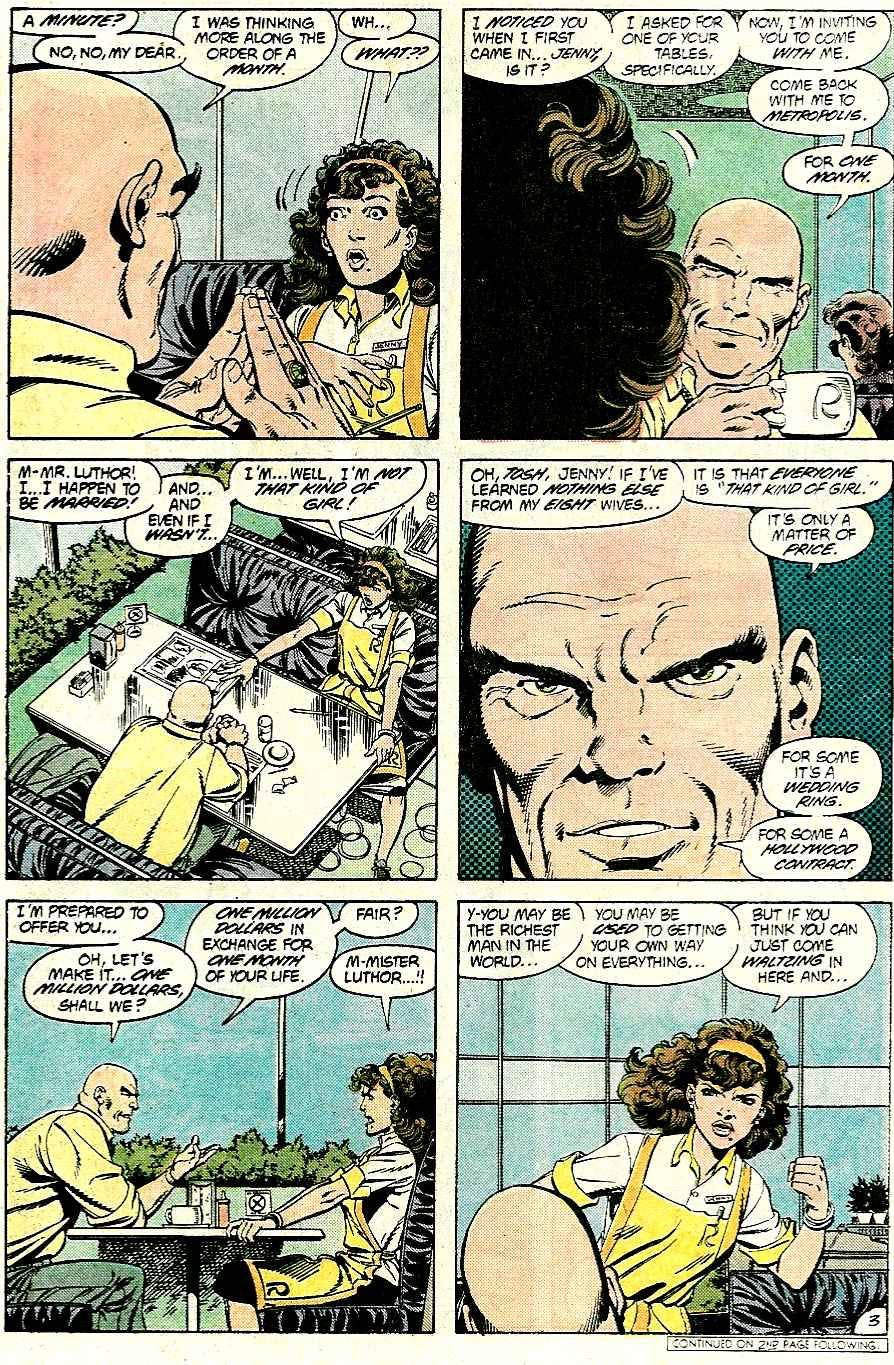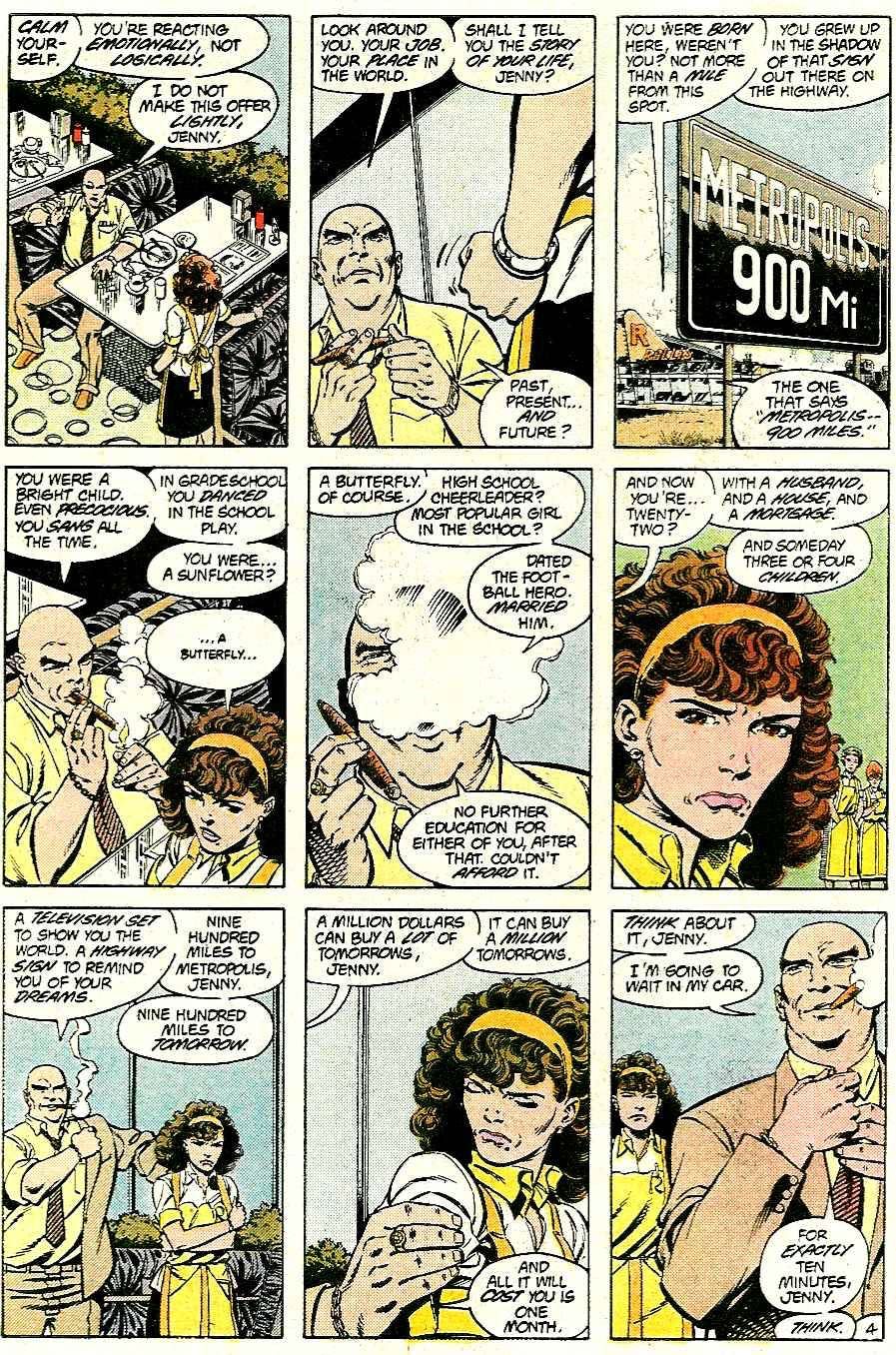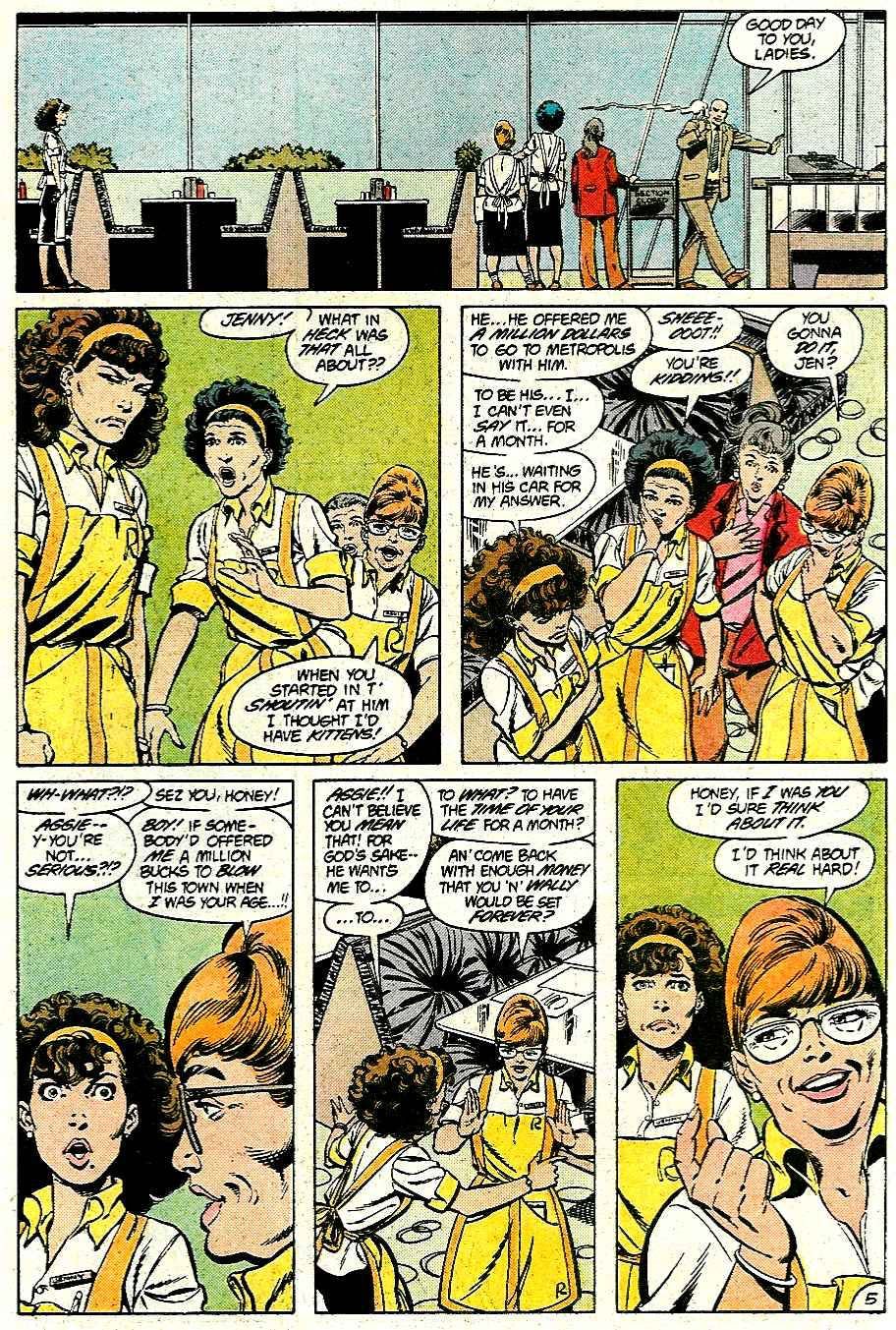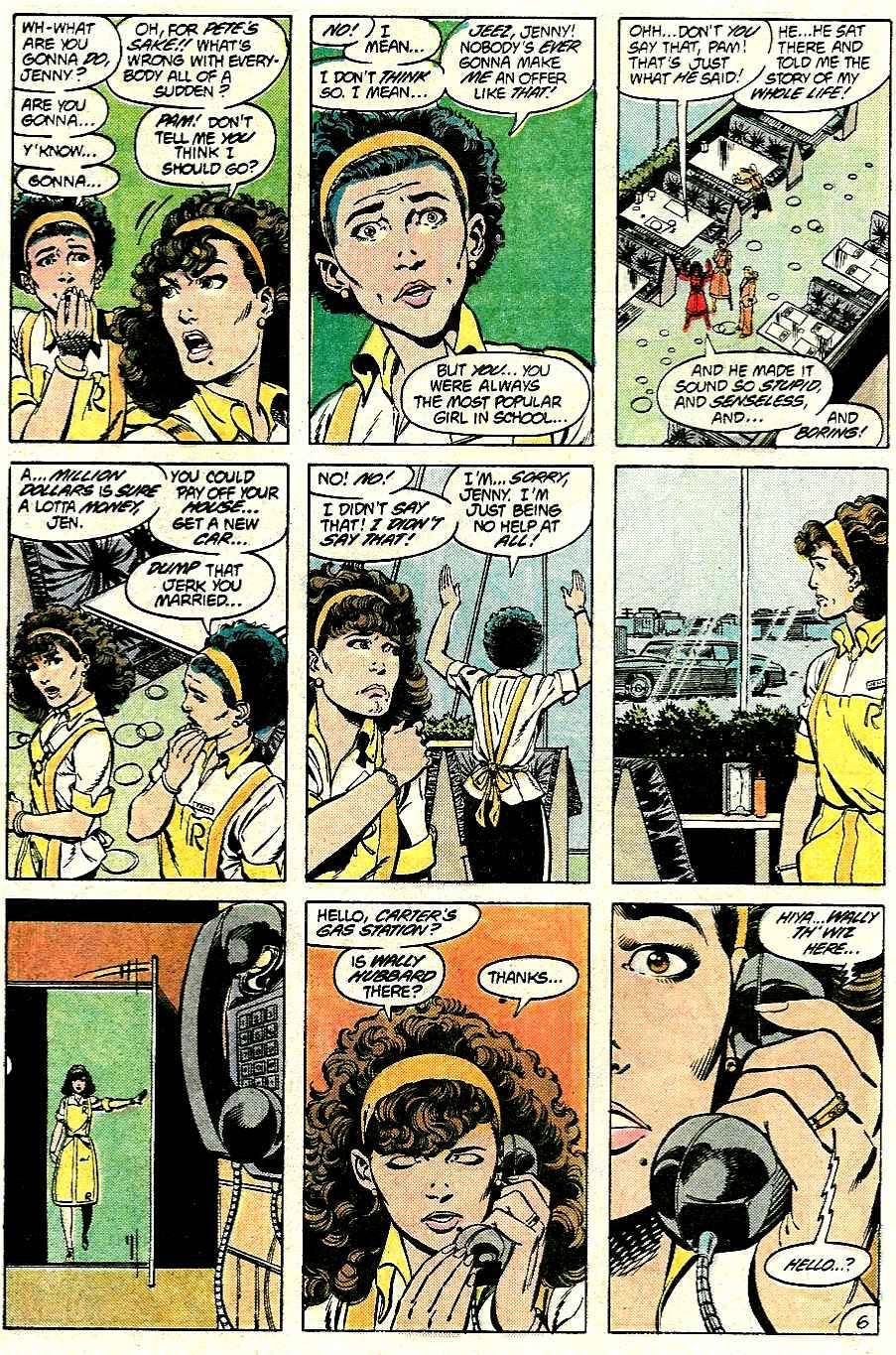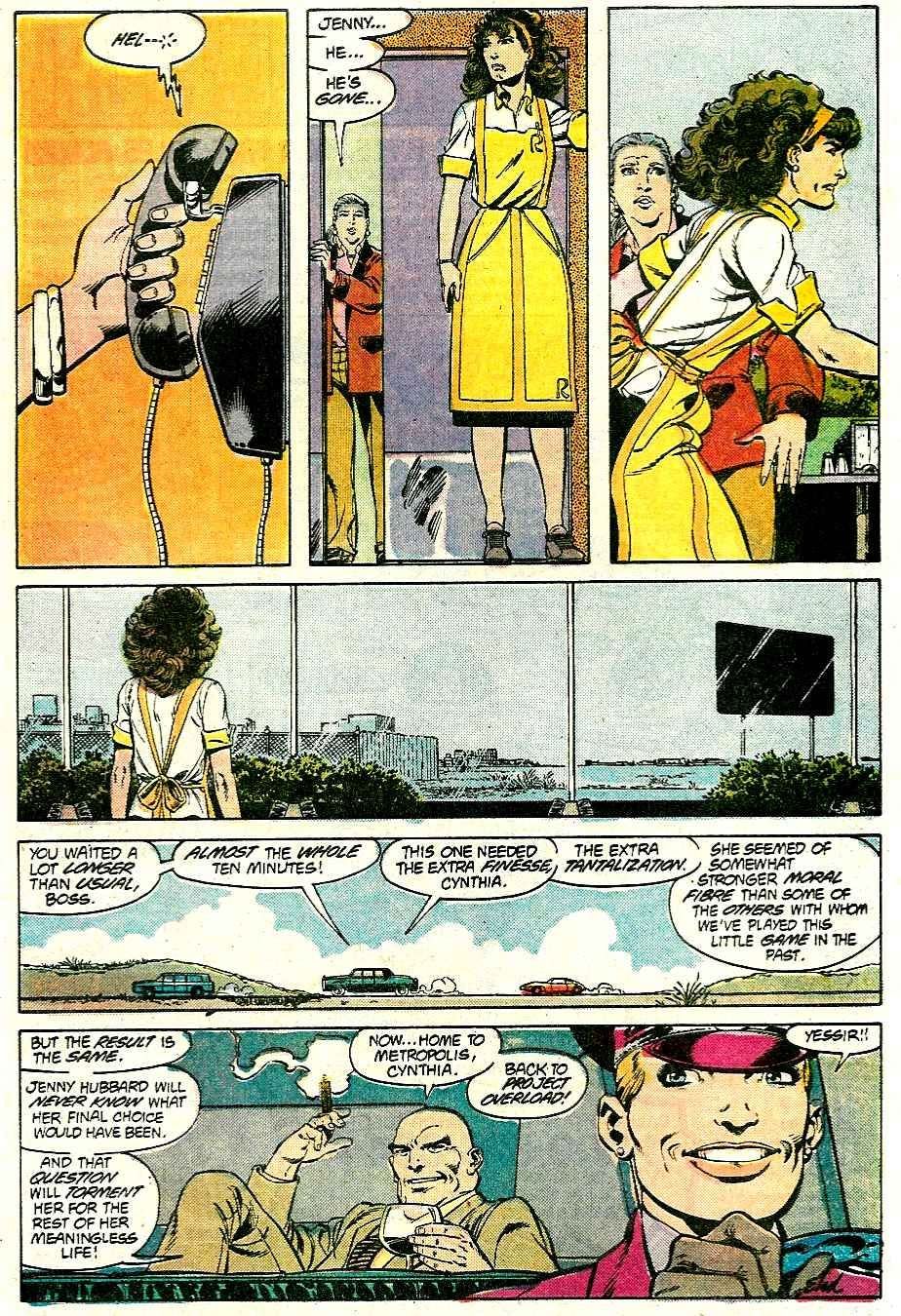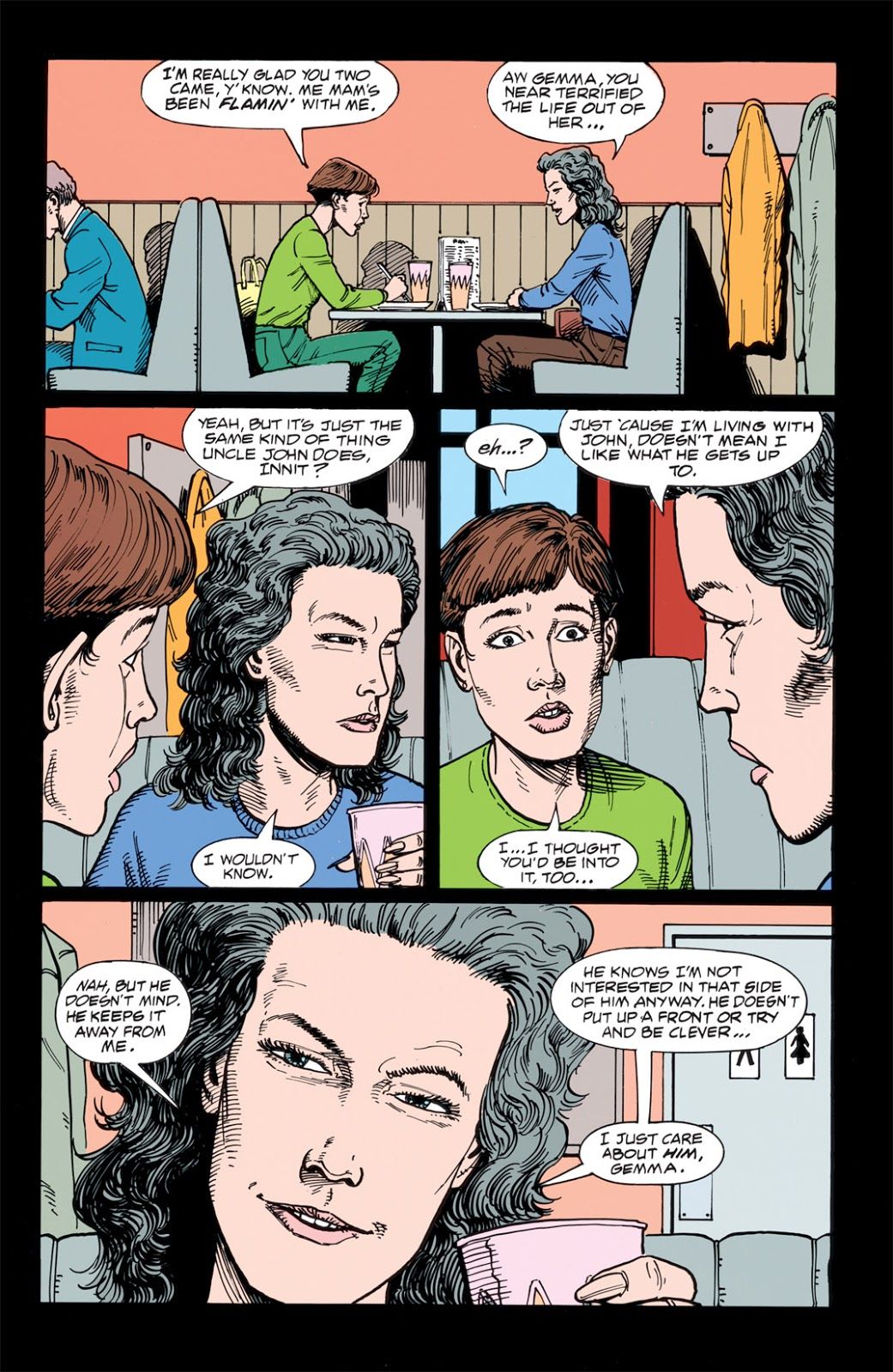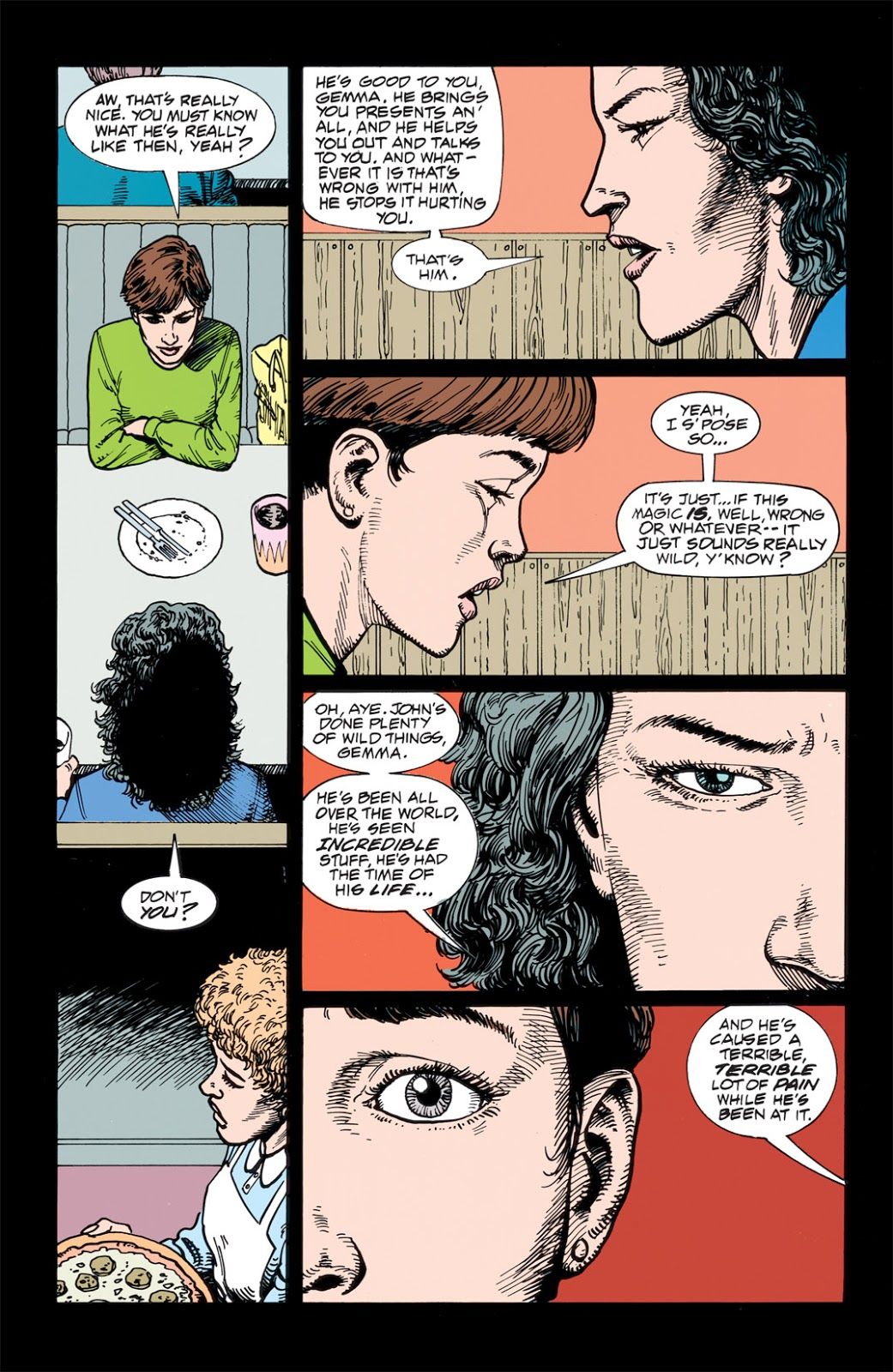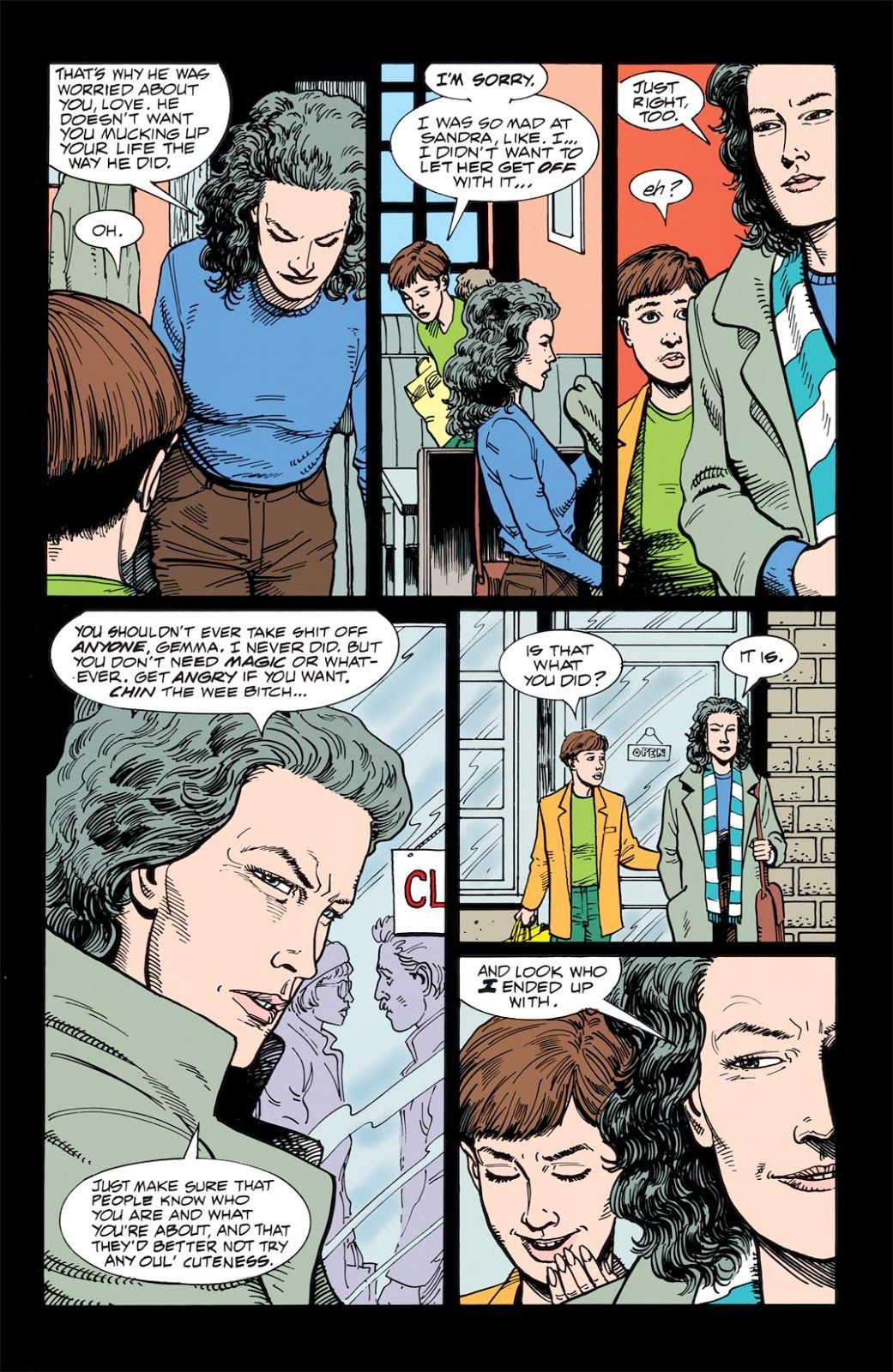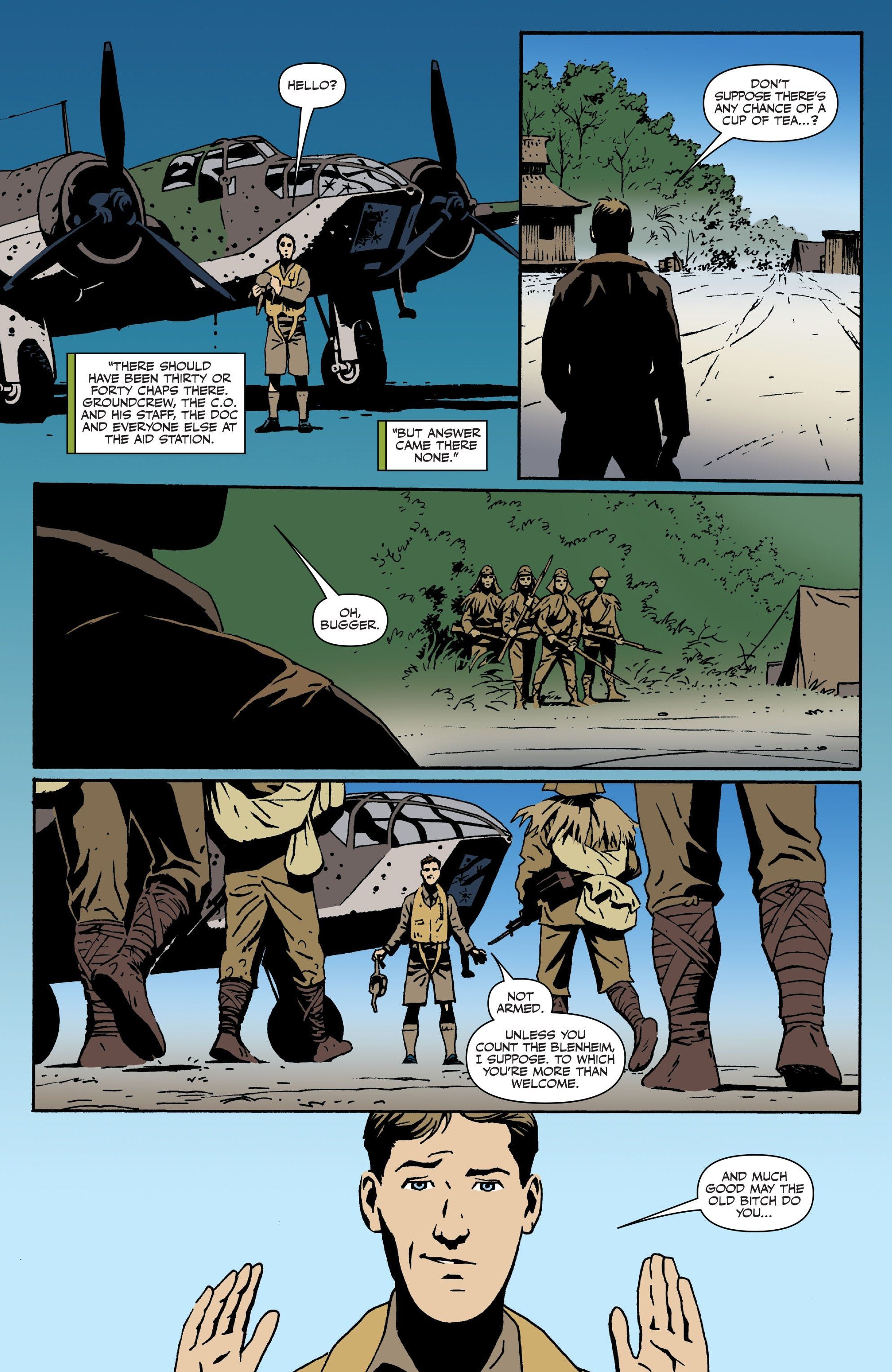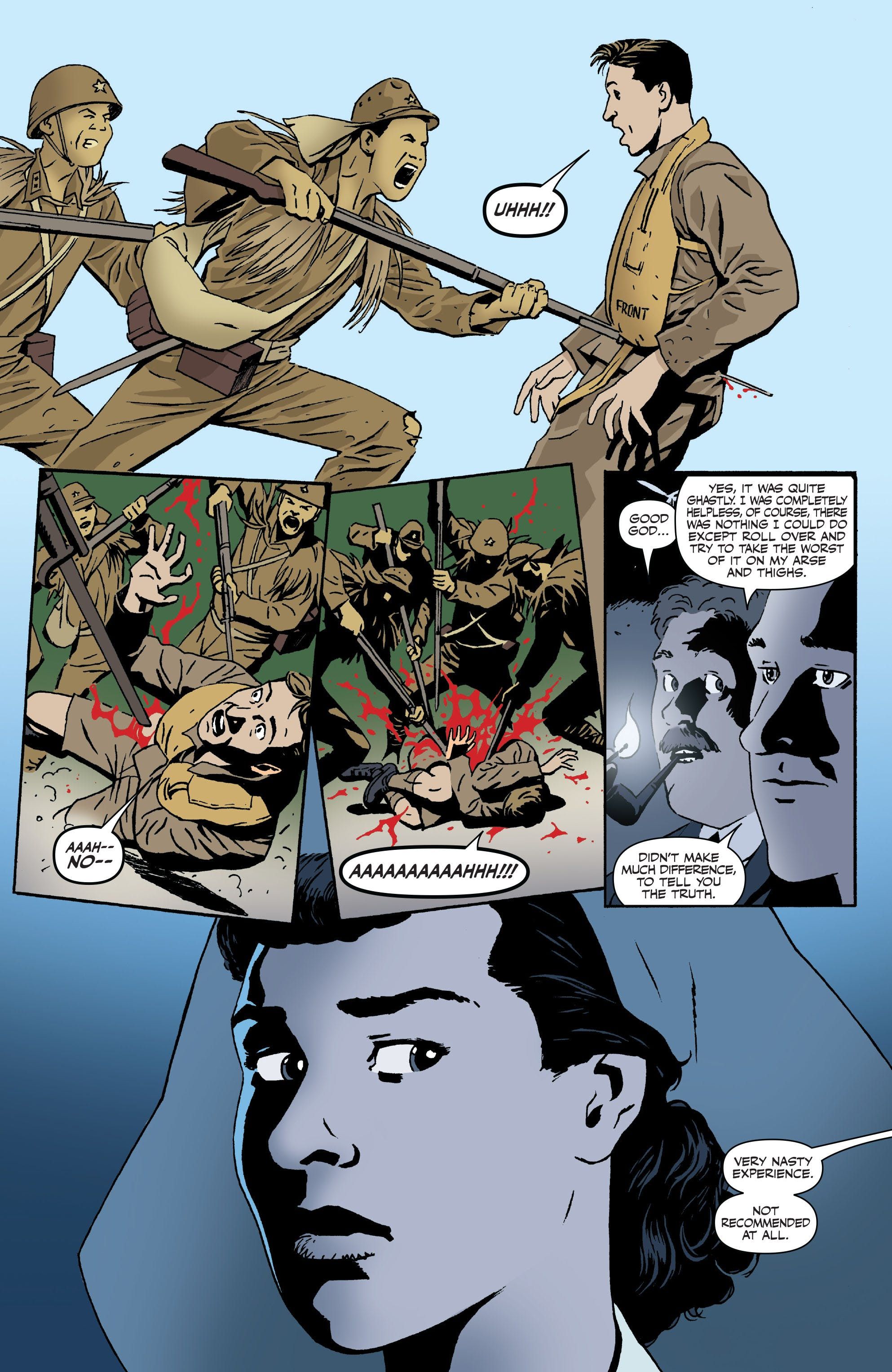The countdown continues with the next four writers that you voted as your favorites of all-time (out of roughly 1,023 ballots cast, with 10 points for first place votes, 9 points for second place votes, etc.).
18. Warren Ellis – 713 points (2 first place votes)
Warren Ellis had worked for some small comic book houses in the early 1990s, with the most notable result being his great Lazarus Churchyard series. After a few years, Ellis began working at Marvel, with a notable run on Hellstorm and Doom 2099. His longest run at this time, though, was on Excalibur, where he introduced the world to Peter Wisdom.
After working on a number of projects for Marvel during the mid-90s (including a memorable Thor storyline), Ellis began his longest-running project yet (issue-wise), with his creator-owned series Transmetropolitan, with artist Darick Robertson, about the journalist Spider Jerusalem, who tries to take down a crooked president in the future. In one issue, the President has successfully declared martial law, but before he can fully take control, Spider takes his shot...
Ellis had already been working for Wildstorm (notably on DV8), but he took his work to a whole new level when he took over Stormwatch (Stormwatch actually predated Transmetropolitan). That series led to two of the great comic book series of the late 1990s and 2000s, the Authority and Planetary (Planetary was not tied into Stormwatch, it just launched the same time as Authority).
Planetary was about a group of (this is what is on the cover of the first issue) "archeologists of the impossible."
Essentially, Planetary explores unexplained phenomena and, if there is any practical use to mankind out of said phenomena, they extract it. The Planetary team consists of the super-strong Jakita Wagner, the "plugged-in" Drummer and the century-old Elijah Snow. The team is funded by the mysterious "Fourth Man." The first "season" of Planetary ended with the discovery of just WHO the Fourth Man is and how that revelation changes the game plan of the title for the rest of the series. Each issue of Planetary explored the concept of "what if all popular culture characters existed, in some form or another, in the Wildstorm Universe?" So each issue, Ellis and Cassaday examined a different notable pop culture figure, almost always with analogues for the characters who are not yet in the public domain (Doc Brass, for instance, instead of Doc Savage).
As the series went by, we learned that there is a group out there with an entirely different focus than the Planetary folks - this group, known as The Four (based on the Fantastic Four, naturally), wants all of the "super-science" of the world to themselves - they don't want the rest of the world to have any access to these wonders. That, and the identity of the Fourth Man, were the key points of plot development over the first 12 issues of Planetary. The revelation of WHO the Fourth Man was excellent.
Authority, meanwhile, was Ellis taking Grant Morrison's "Widescreen" action concept from the JLA and making it even bigger in scale with artist Bryan Hitch. Like when a villain creates a race of mindless super beings at his command, Midnighter literally just used the Authority's giant ship to crash into the villain's island...
For years, Ellis would do short runs on Marvel titles (like the brilliant Nextwave with Stuart Immonen) and mix them in with short runs on independent titles (a lot of Wildstorm and Avatar stuff). More recently, Ellis did a Batman miniseries with Bryan Hitch while working in television, as well.
17. Roger Stern – 745 points (9 first place votes)
I think the best attribute in Roger Stern's work is his heart. His stories tend to be rooted in the decency of heroes - his heroes have HEART, as it were. His Captain America has an interesting reaction to having to kill a vampire (as well as possibly running for elected office), one of the best scenes in his legendary "Under Siege" storyline in Avengers are those where we see the facade behind Captain America crumble a bit when he loses his only photo of his mother.
Speaking of "heart," here is "The Kid Who Collects Spider-Man," from Stern's acclaimed Amazing Spider-Man run where Spidey visits his biggest fan (SPOILERS AHEAD! Just skip these images if you don't want to be spoiled on a comic that is well over 30 years old).
Stern was an editor before he began to write a bunch of books for Marvel, and those skills allowed him to pretty seamlessly work his various books together. For a while there, Stern and John Byrne, along with Chris Claremont, Louise Simonson and Walter Simonson really made it feel like the Marvel Universe was one big story in a way that it had not appeared to be since the earliest days of Stan Lee and Jack Kirby.
One of the more remarkable additions Stern made to the Marvel Universe during his time on the Avengers was the addition of a new, female black Captain Marvel. Monica Rambeau debuted in an Amazing Spider-Man Annual and then transitioned to the Avengers, where she began as a trainee member before graduating to a full-fledged member of the team. Monica had all of that heart that I mentioned before in regard to Stern and she slowly became one of the most reliable members of the team and even took over as the leader of the team. In the end, Stern actually got fired from the Avengers because he refused to go along with a proposed plot by his editor to diminish Monica's leadership skills and get her out of the book.
Stern moved over to DC, where he succeeded his friend, John Byrne, on the main Superman title. Stern worked alongside Jerry Ordway, Dan Jurgens and later Louise Simonson in shaping the vision of Superman for DC Comics in the late 1980s and early 1990s. The Superman brain trust got Superman engaged to Lois Lane and later, in 1992, they shocked the world by actually killing off the Man of Steel! Stern later wrote the novelization of the Death of Superman.
During that same period, Stern also introduced a brand-new Starman for DC. Stern actually ended up returning to Marvel to write more Spider-Man stories in the 1990s, even getting the chance to finally resolve a storyline that he had introduced during his run on Amazing Spider-Man where he had a mysterious bad guy become the Hobgoblin. After he left the series, the Spider-Man staff came up with a different Hobgoblin than the one that he intended to reveal as the real deal, so he was allowed to return to Marvel to reveal who the Hobgoblin REALLY was all along!
16. John Byrne – 813 points (10 first place votes)
After cutting his teeth as the co-plotter (and eventual solo plotter) of X-Men with Chris Claremont (including being the main driving force behind the classic storyline, "Days of Future Past"), John Byrne made the move to the Fantastic Four as a solo writer (as well as artist). Byrne intended to treat his run in a similar manner to what Stan Lee and Jack Kirby did on their original run - take the Fantastic Four to far off new worlds, introduce bizarre new characters, while still re-using the really notable ones like Doctor Doom and Galactus (and yes, Diablo, too), and that's exactly what Byrne did.
Soon after Byrne took over the book, he was tasked with coming up with a 20th anniversary story, and he came up with a beautiful one with the Fantastic Four trapped in a world by Doctor Doom where they did not have powers. It was quite a touching story.
Then Byrne launched into his first major storyline with the title, a major tale involving Galactus and the Avengers. Byrne introduced many different new alien races during his tenure with the book, but probably his most notable achievements were with the characters he already had, as Byrne did a great deal of character development during his run, specifically the evolution of Sue from the Invisible Girl to the Invisible Woman, having Sue become pregnant but miscarry, having Thing leave the team (to be replaced by the She-Hulk) and having Johnny Storm become involved with the Thing's erstwhile girlfriend, Alicia Masters. Doctor Doom, who is practically the fifth member of the book, also saw a number of interesting character work via Byrne, especially the story where the Fantastic Four did not even appear!
While on the Fantastic Four, Byrne got a chance to reboot Superman for DC and he leaped at the opportunity. Byrne made a number of changes (although, notably, he also did not change a LOT of the comic - there certainly were more similarities to Pre-Byrne Superman comics in Byrne's Superman than dissimilarities), including reducing Superman's power level to one closer to the 1940s Superman, making Clark Kent more of an important part of the book (including a revamped origin where Clark was more popular as a teen), eliminating Superman ever operating as Superboy (as Clark gained his powers in his late teens), making Superman the sole survivor of Krypton, making Krypton a cold, heartless planet and basically having all the various Superman villains be reintroduced by Byrne or Marv Wolfman (who began the reboot with Byrne, but soon Byrne took over writing his comic, as well).
Lex Luthor was re-envisioned as a ruthless businessman that the public thought of as a philanthropist (this take on Luthor was used in the Lois and Clark TV series). The Luthor change was one of the most notable aspect of Byrne's run, including this famous back-up scene from an early Superman issue...
Awesome villainy right there.
While mostly out of the monthly comic book game, Byrne has been doing some fine writing on a passion project called X-Men: Elsewhen, which is a sort of What If...? where Byrne continues from where he left Uncanny X-Men.
RELATED: Top Comic Book Writers 22-19
15. Garth Ennis – 887 points (12 first place votes)
For decades now, Garth Ennis has excelled by holding true to a simple idea - if you create a true and believable character, that character can carry a reader's interest no matter how otherwise twisted the story gets. On the flip side of that same idea is the following - even in the most outlandish and bizarre of stories can you find an approach that allows you to see the humanity of a given character.
Garth Ennis tells outlandish stories. Garth Ennis tells stories where horrible, horrible, violent things occur. However, these events do not occur simply for the sake of gore, they exist to showcase how a well-developed character can react to them.
Much of Ennis' works hang upon the friendship of two male characters, from Hitman's Tommy Monaghan and Nate the Hatt to Preacher's Jesse Custer and Cassidy to The Boys' Butcher and Hughie. However, that doesn't mean that Ennis doesn't know how to write strong female characters. Heck, his first prominent U.S. work was Hellblazer, which introduced one of the greatest love interests that John Constantine ever had (and one of the very few supporting characters ever allowed to successfully LEAVE Constantine's world), Kit Ryan.
A character I was very impressed with, though, was Carrie Sutton, of the 2009 mini-series Battlefields: Dear Billy. In Dear Billy, Ennis explores one of the lesser-explored aspects of war, the treatment of female prisoners by the Japanese. Carrie was a nurse who was captured with a group of other nurses in Singapore and after they were all raped, they were gunned down. Only Carrie survived. Carrie eventually develops a relationship with Billy Wedgewood, a British pilot who was attacked by the Japanese and stabbed so many times by their bayonets that it is shocking that he survived.
Here, though, is where Ennis gets into the disgusting yet fascinating issue of surviving rape. Billy and Carrie both suffered horrible attacks. However, as Ennis rightly notes, there is no real comparison when it comes to actually being raped. By the time the series ends, you will come to enjoy Carrie so much that the depravity of her rape feels that much more painful, that it robbed us of a woman like this. And there, in the horrors of wartime rape, Ennis is able to find some beautiful (if horribly tragic) humanity.
That's pretty much par for the course with Ennis, which makes him one of the most fascinating writers in all of comics.
Recently, his The Boys comic book series (with artist Darick Robertson) has been adapted into a hit TV series, and so the whole world is now more familiar with Ennis' particular brand of disturbing stories mixed with heart and compelling friendships.

